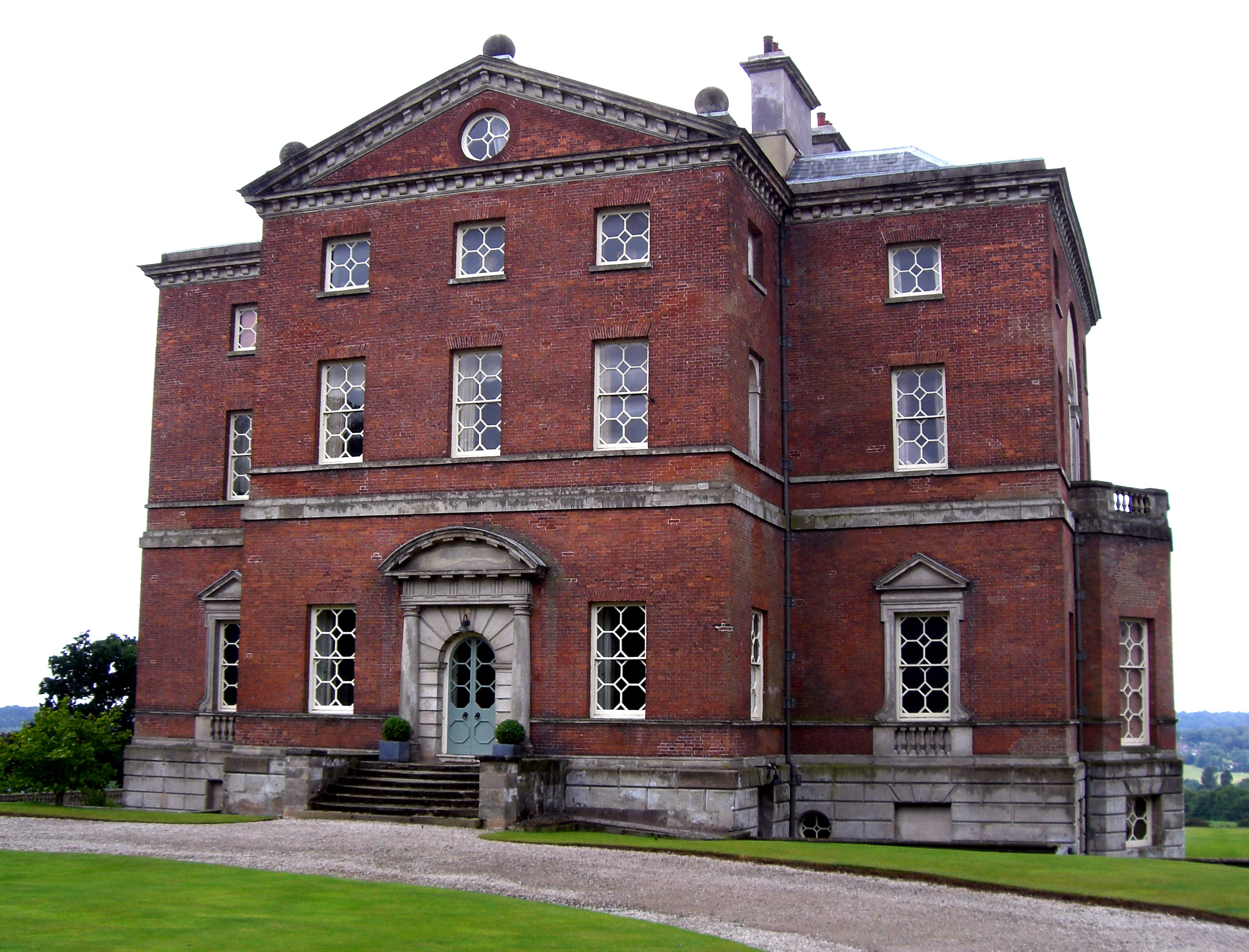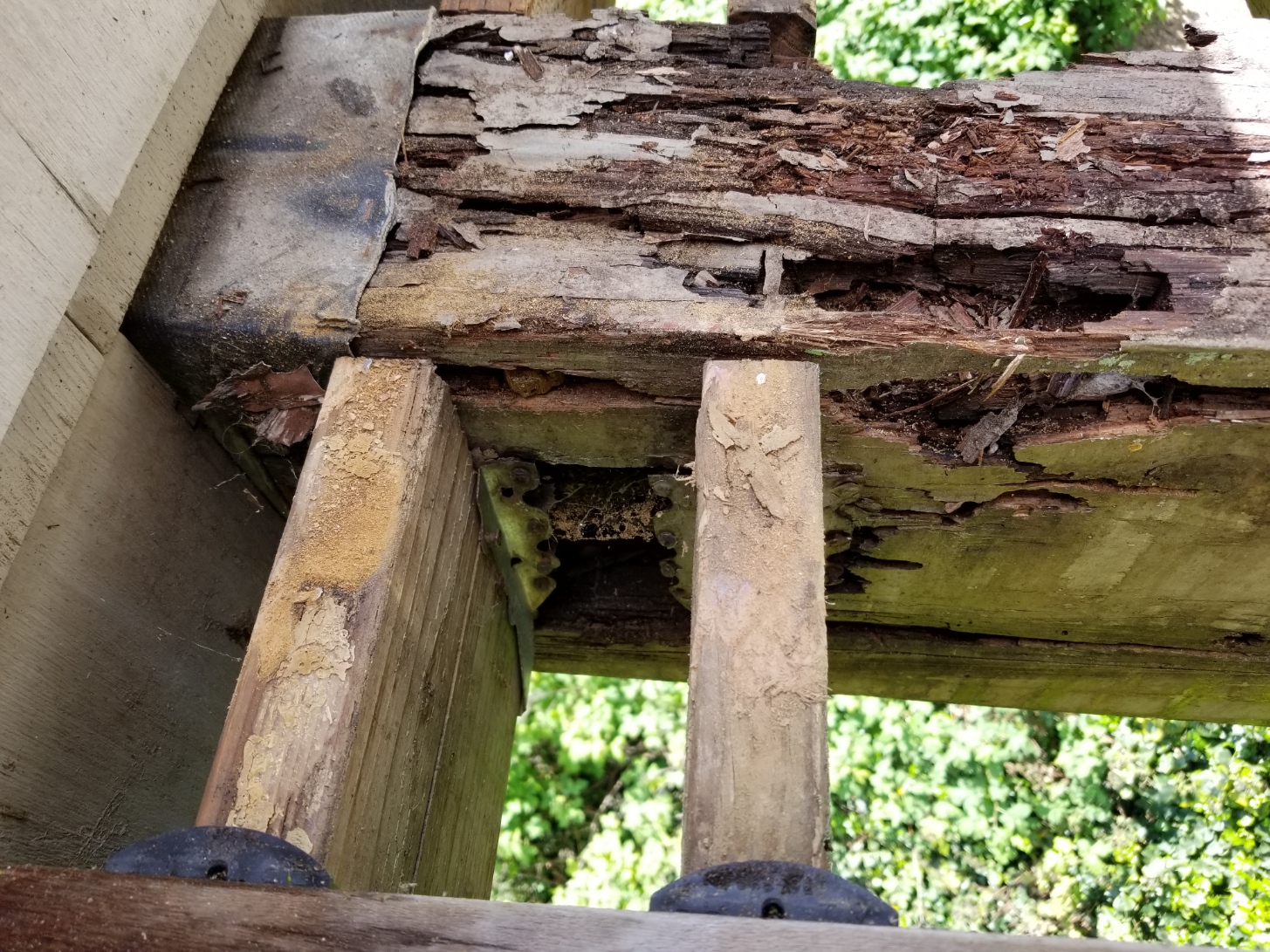|
Barlaston Hall
Barlaston Hall is an English Palladian country house in the village of Barlaston in Staffordshire, on a ridge overlooking the valley of the River Trent to the west, about south of Stoke-on-Trent, with the towns of Stone about to the south, and Stafford about south (). It was bought by the Wedgwood pottery company in 1937,Marcus Binney and Kit Martin, ''The country house: to be or not to be'' (London, Save Britain's Heritage, 1982), p.105 but disrepair and subsidence due to coal mining brought the hall close to demolition in the early 1980s. It was bought for £1 by a trust set up by Save Britain's Heritage and restored. It has returned to use as a private residence. The hall is a Grade I listed building. History Barlaston Hall was probably designed by architect Sir Robert Taylor for Thomas Mills, an attorney from Leek, in 1756–58, to replace the existing manor house that he had acquired through marriage. The hall has a red-brick exterior, and is one of a f ... [...More Info...] [...Related Items...] OR: [Wikipedia] [Google] [Baidu] |
Barlaston Hall
Barlaston Hall is an English Palladian country house in the village of Barlaston in Staffordshire, on a ridge overlooking the valley of the River Trent to the west, about south of Stoke-on-Trent, with the towns of Stone about to the south, and Stafford about south (). It was bought by the Wedgwood pottery company in 1937,Marcus Binney and Kit Martin, ''The country house: to be or not to be'' (London, Save Britain's Heritage, 1982), p.105 but disrepair and subsidence due to coal mining brought the hall close to demolition in the early 1980s. It was bought for £1 by a trust set up by Save Britain's Heritage and restored. It has returned to use as a private residence. The hall is a Grade I listed building. History Barlaston Hall was probably designed by architect Sir Robert Taylor for Thomas Mills, an attorney from Leek, in 1756–58, to replace the existing manor house that he had acquired through marriage. The hall has a red-brick exterior, and is one of a f ... [...More Info...] [...Related Items...] OR: [Wikipedia] [Google] [Baidu] |
Diamond
Diamond is a Allotropes of carbon, solid form of the element carbon with its atoms arranged in a crystal structure called diamond cubic. Another solid form of carbon known as graphite is the Chemical stability, chemically stable form of carbon at Standard conditions for temperature and pressure, room temperature and pressure, but diamond is metastable and converts to it at a negligible rate under those conditions. Diamond has the highest Scratch hardness, hardness and thermal conductivity of any natural material, properties that are used in major industrial applications such as cutting and polishing tools. They are also the reason that diamond anvil cells can subject materials to pressures found deep in the Earth. Because the arrangement of atoms in diamond is extremely rigid, few types of impurity can contaminate it (two exceptions are boron and nitrogen). Small numbers of lattice defect, defects or impurities (about one per million of lattice atoms) color diamond blue (bor ... [...More Info...] [...Related Items...] OR: [Wikipedia] [Google] [Baidu] |
National Coal Board
The National Coal Board (NCB) was the statutory corporation created to run the nationalised coal mining industry in the United Kingdom. Set up under the Coal Industry Nationalisation Act 1946, it took over the United Kingdom's collieries on "vesting day", 1 January 1947. In 1987, the NCB was renamed the British Coal Corporation, and its assets were subsequently privatised. Background Collieries were taken under government control during the First and Second World Wars. The Sankey Commission in 1919 gave R. H. Tawney, Sidney Webb and Sir Leo Chiozza Money the opportunity to advocate nationalisation, but it was rejected. Coal reserves were nationalised during the war in 1942 and placed under the control of the Coal Commission, but the mining industry remained in private hands. At the time, many coal companies were small, although some consolidation had taken place in the years before the war. Formation and organisation The NCB was one of a number of public corporations cr ... [...More Info...] [...Related Items...] OR: [Wikipedia] [Google] [Baidu] |
Bob Weighton
, the Gerontology Research Group (GRG) had validated the longevity claims of 154 British citizens who have become " supercentenarians", attaining or surpassing 110 years of age. This number including 23 emigrants who died in other nations. The oldest known British person ever is Charlotte Hughes, who died in 1993 at the age of 115 years and 228 days. The oldest man ever from the United Kingdom is Henry Allingham, who died in 2009 at the age of 113 years and 42 days. As of , the oldest person living in the United Kingdom is Ethel Caterham, born 21 August 1909, aged . 100 oldest British people ever Biographies Betsy Baker Betsy Baker (August 20, 1842 – October 24, 1955) was born Betsy Ann Russell in Great Brington, England, immigrated to the United States, settled in Nebraska, and became the world's oldest person. She lived for 65 years in Johnson County, where she was called "the Queen mother of the Johnson County Fair" in 1953. At age 107, she received a congrat ... [...More Info...] [...Related Items...] OR: [Wikipedia] [Google] [Baidu] |
Kit Martin
Kit Martin CBE (born 6 May 1947) is a British architectural designer and country house property developer. Martin is the son of Sir Leslie Martin, Professor of Architecture at the University of Cambridge. Since the 1970s Martin has specialised in the saving and restoration of country houses, by dividing them into smaller dwellings and apartments. He is an advisor to the Prince of Wales on the safeguarding of major historic buildings and remains an advisor to The Prince's Regeneration Trust (previously being a director of The Phoenix Trust), a trustee of Save Europe's Heritage, and a former member of the Historic Buildings Council for Scotland (now the Historic Environment Advisory Council for Scotland). Martin has restored and converted around twelve houses, eight in England and four in Scotland, as well as other types of historic building. He has used the company name Kit Martin (Historic Houses Rescue) Limited since 1974, and Historic Houses Rescue Limited from 1996. From 2004 t ... [...More Info...] [...Related Items...] OR: [Wikipedia] [Google] [Baidu] |
Listed Building
In the United Kingdom, a listed building or listed structure is one that has been placed on one of the four statutory lists maintained by Historic England in England, Historic Environment Scotland in Scotland, in Wales, and the Northern Ireland Environment Agency in Northern Ireland. The term has also been used in the Republic of Ireland, where buildings are protected under the Planning and Development Act 2000. The statutory term in Ireland is " protected structure". A listed building may not be demolished, extended, or altered without special permission from the local planning authority, which typically consults the relevant central government agency, particularly for significant alterations to the more notable listed buildings. In England and Wales, a national amenity society must be notified of any work to a listed building which involves any element of demolition. Exemption from secular listed building control is provided for some buildings in current use for worship, ... [...More Info...] [...Related Items...] OR: [Wikipedia] [Google] [Baidu] |
Geological Fault
In geology, a fault is a planar fracture or discontinuity in a volume of rock across which there has been significant displacement as a result of rock-mass movements. Large faults within Earth's crust result from the action of plate tectonic forces, with the largest forming the boundaries between the plates, such as the megathrust faults of subduction zones or transform faults. Energy release associated with rapid movement on active faults is the cause of most earthquakes. Faults may also displace slowly, by aseismic creep. A ''fault plane'' is the plane that represents the fracture surface of a fault. A ''fault trace'' or ''fault line'' is a place where the fault can be seen or mapped on the surface. A fault trace is also the line commonly plotted on geologic maps to represent a fault. A ''fault zone'' is a cluster of parallel faults. However, the term is also used for the zone of crushed rock along a single fault. Prolonged motion along closely spaced faults can blur the ... [...More Info...] [...Related Items...] OR: [Wikipedia] [Google] [Baidu] |
Coal Mining
Coal mining is the process of extracting coal from the ground. Coal is valued for its energy content and since the 1880s has been widely used to generate electricity. Steel and cement industries use coal as a fuel for extraction of iron from iron ore and for cement production. In the United Kingdom and South Africa, a coal mine and its structures are a colliery, a coal mine is called a 'pit', and the above-ground structures are a 'pit head'. In Australia, "colliery" generally refers to an underground coal mine. Coal mining has had many developments in recent years, from the early days of men tunneling, digging and manually extracting the coal on carts to large open-cut and longwall mines. Mining at this scale requires the use of draglines, trucks, conveyors, hydraulic jacks and shearers. The coal mining industry has a long history of significant negative environmental impacts on local ecosystems, health impacts on local communities and workers, and contributes heavily to th ... [...More Info...] [...Related Items...] OR: [Wikipedia] [Google] [Baidu] |
Subsidence
Subsidence is a general term for downward vertical movement of the Earth's surface, which can be caused by both natural processes and human activities. Subsidence involves little or no horizontal movement, which distinguishes it from slope movement. Processes that lead to subsidence include dissolution of underlying carbonate rock by groundwater; gradual compaction of sediments; withdrawal of fluid lava from beneath a solidified crust of rock; mining; pumping of subsurface fluids, such as groundwater or petroleum; or warping of the Earth's crust by tectonic forces. Subsidence resulting from tectonic deformation of the crust is known as tectonic subsidence and can create accommodation for sediments to accumulate and eventually lithify into sedimentary rock. Ground subsidence is of global concern to geologists, geotechnical engineers, surveyors, engineers, urban planners, landowners, and the public in general.National Research Council, 1991. ''Mitigating losses from land subsi ... [...More Info...] [...Related Items...] OR: [Wikipedia] [Google] [Baidu] |
Dry Rot
Dry rot is wood decay caused by one of several species of fungi that digest parts of the wood which give the wood strength and stiffness. It was previously used to describe any decay of cured wood in ships and buildings by a fungus which resulted in a darkly colored deteriorated and cracked condition. The life-cycle of dry rot can be broken down into four main stages. Dry rot begins as a microscopic spore which, in high enough concentrations, can resemble a fine orange dust. If the spores are subjected to sufficient moisture, they will germinate and begin to grow fine white strands known as hyphae. As the hyphae grow they will eventually form a large mass known as mycelium. The final stage is a fruiting body which pumps new spores out into the surrounding air. In other fields, the term has been applied to the decay of crop plants by fungi. In health and safety, the term is used to describe the deterioration of rubber, for example the cracking of rubber hoses. Discussion '' ... [...More Info...] [...Related Items...] OR: [Wikipedia] [Google] [Baidu] |
Wedgwood Memorial College
Wedgwood Memorial College was a small residential college in Barlaston, near Stoke-on-Trent in Staffordshire, England. The college was owned and operated by Stoke-on-Trent City Council until it was closed down by the council in March 2012. It still houses the centre of Esperanto education at Estoril House. There is also a similarly named building in Burslem, the Wedgwood Institute, which is sometimes called the "Wedgwood Memorial Institute". This is a completely separate institution. The college, a member of the Adult Residential Colleges Association, offered short courses in literature and languages (French, German and Esperanto); political science and history; and art, art history and architectural history. Wedgwood Memorial College had a non-circulating library with 15,000 volumes available for research and private study. The buildings were also rented out for weddings, parties and small conferences, with eight rooms available that accommodated from ten to 40 people per r ... [...More Info...] [...Related Items...] OR: [Wikipedia] [Google] [Baidu] |
Etruria, Staffordshire
Etruria is a suburb of Stoke-on-Trent, Staffordshire, England. History Home of Wedgwood Etruria was the fourth and penultimate site for the Wedgwood pottery business. Josiah Wedgwood, who was previously based in Burslem, opened his new works in 1769. It was named after the Italian district of Etruria, home of the Etruscan people who were renowned for their artistic products. The site covered and was next to the Trent and Mersey Canal. As well as Wedgwood's home, Etruria Hall, it included the Etruria Works which remained in use by the Wedgwood enterprise until 1950. The Wedgwood factory is now in Barlaston, a village about six miles to the south of the Etruria site. Etruria Hall was the site of the substantial invention of photography by Thomas Wedgwood in the 1790s. After Wedgwood Much of Etruria became derelict with the move of Wedgwood after the Second World War and the subsequent closure of the nearby Shelton Bar steelworks. Large-scale regeneration began in the ... [...More Info...] [...Related Items...] OR: [Wikipedia] [Google] [Baidu] |









